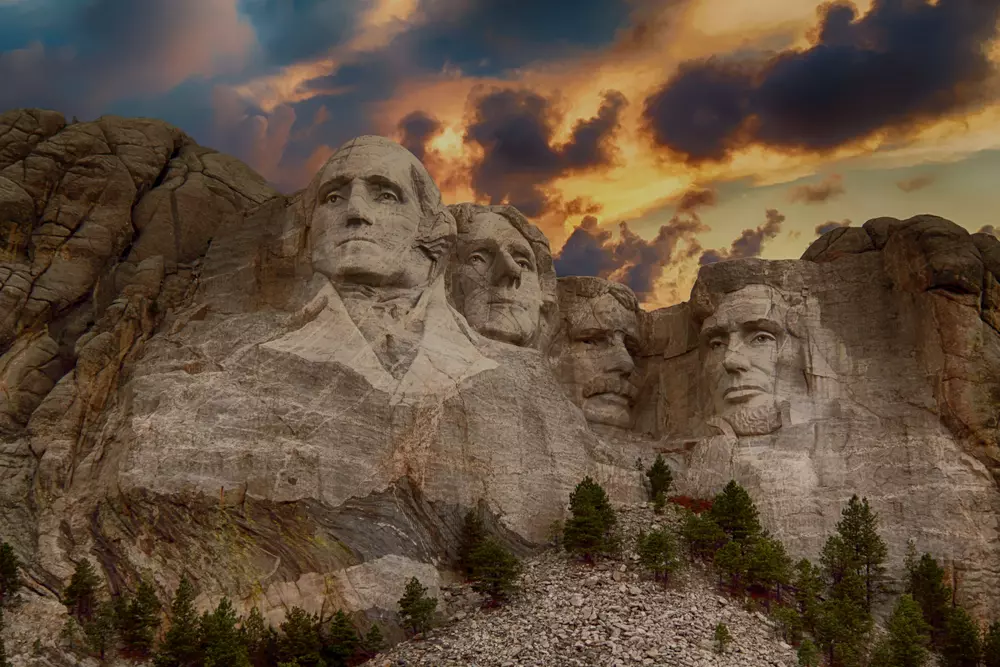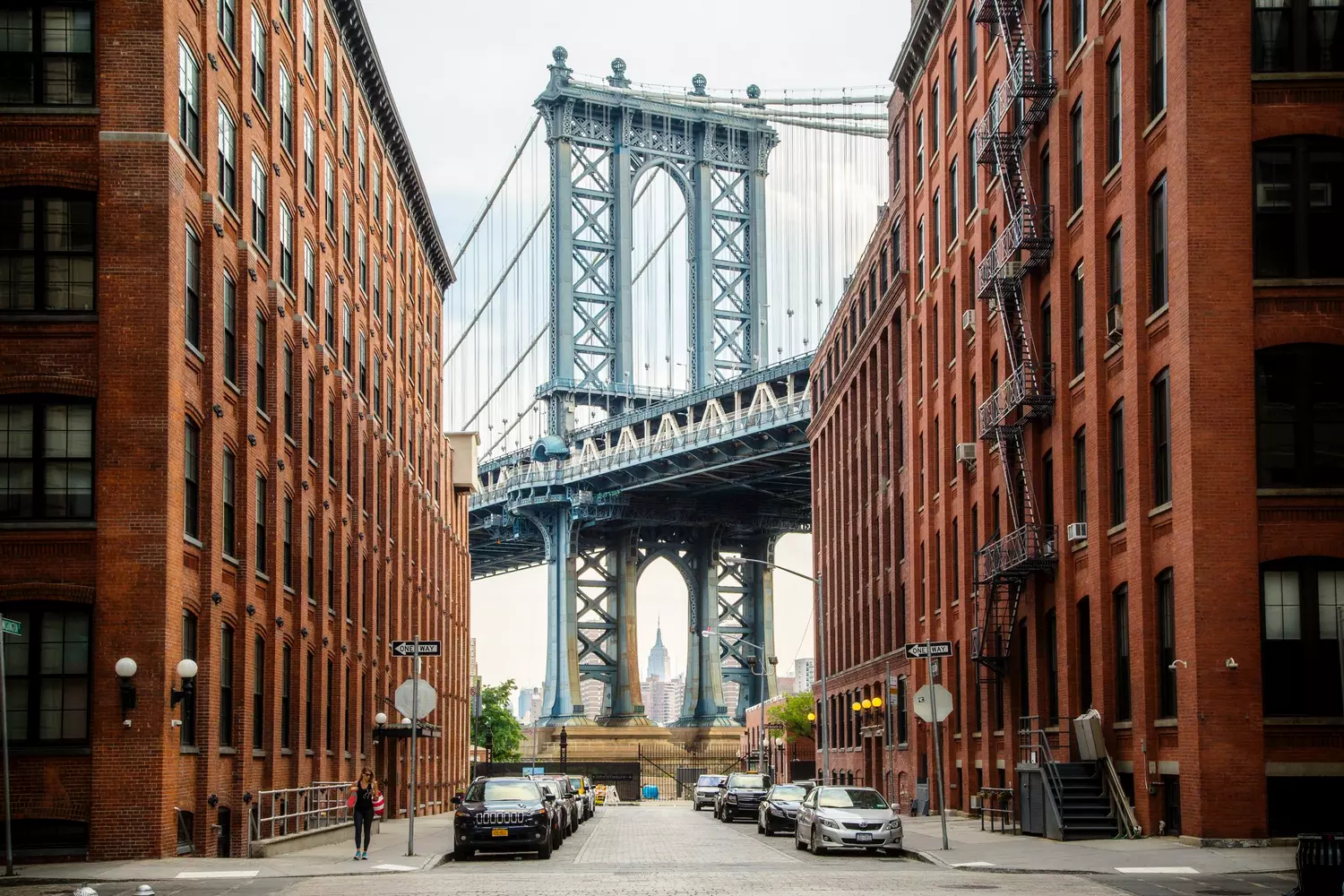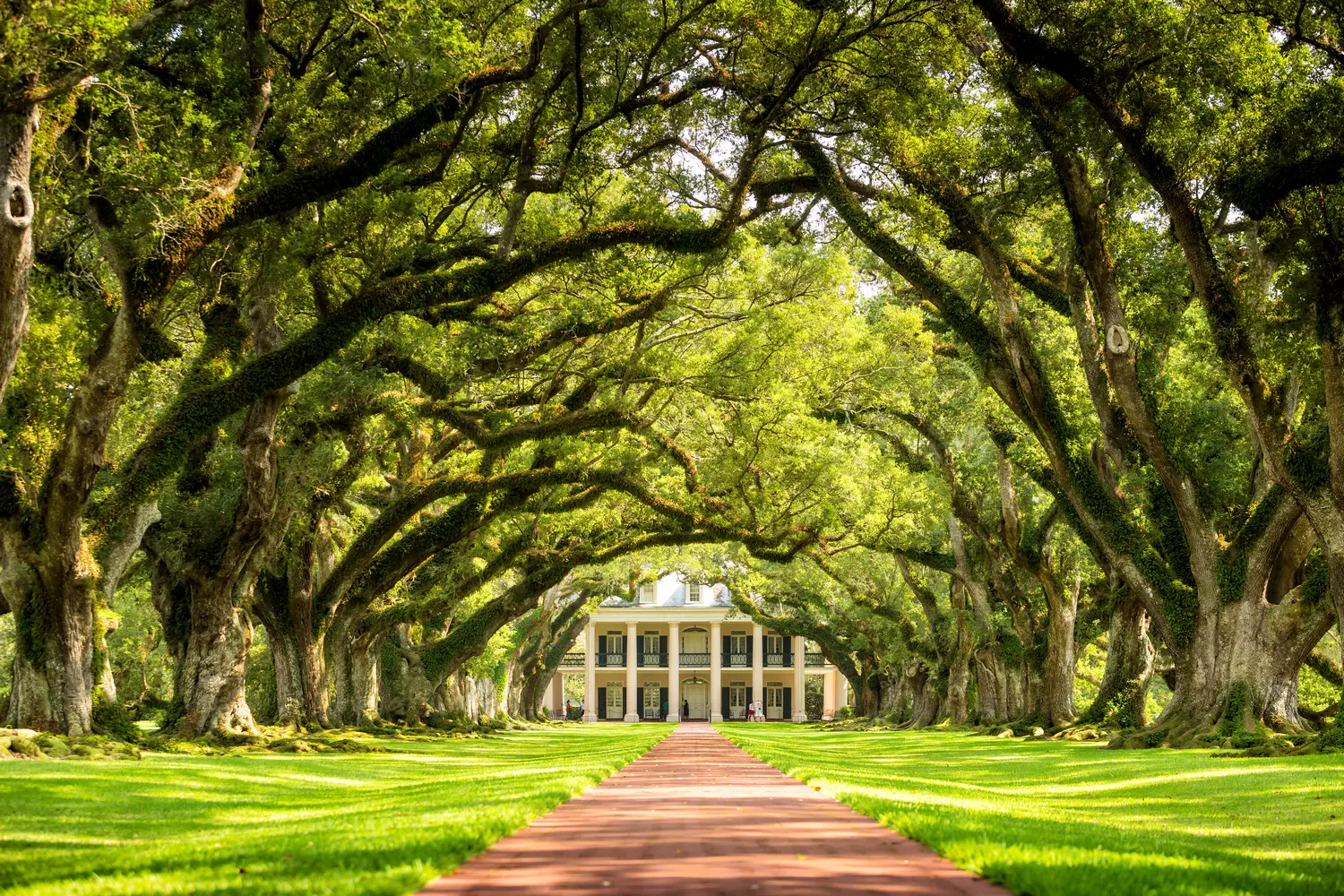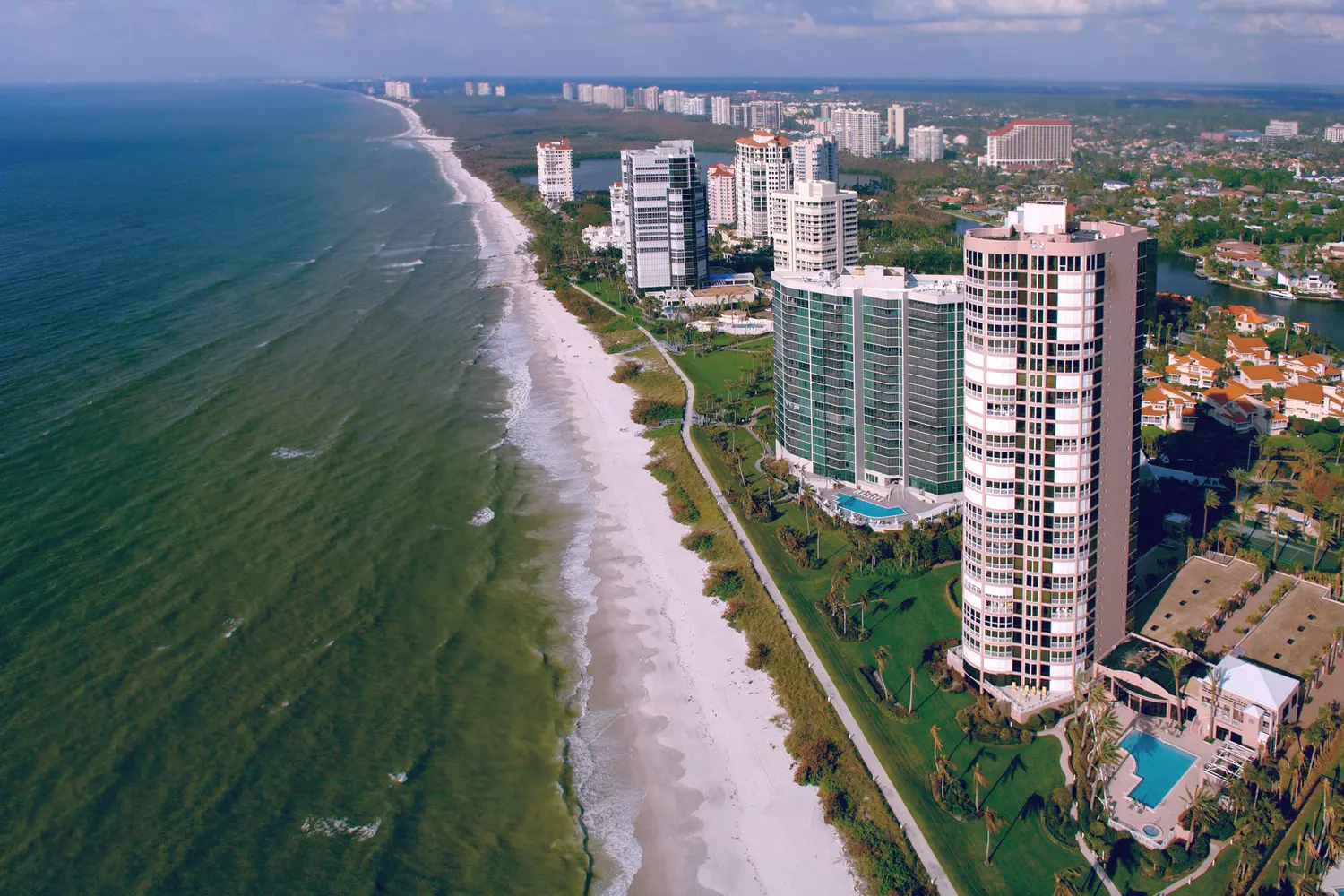Dust, sweat, and gold — these were the three elements that forged the dreams of millions. In the second half of the 19th century, America moved to the rhythm of a fever. But it wasn’t an illness — it was the Gold Rush. Not an epidemic, but a national obsession with the idea of sudden wealth. Hundreds of thousands abandoned their homes, families, and familiar lives to head West. They chased a dream, unaware that what lay ahead was hunger, disease, violence — and, more often than not, disappointment.
Tempting rumors of gold nuggets lying just beneath their feet turned farmers into fortune seekers and quiet villages into roaring mining camps. People who had never held a pickaxe shed their office suits, grabbed shovels off the wall, and set off toward the horizon — to where the earth seemed to breathe gold. It was a time when a single cry — “Gold!” — could change everything: a life, a town, sometimes even the course of the nation’s history.
But the Gold Rush was more than just the glitter of wealth. It also cast a long shadow. Hundreds of thousands of men and women, driven by dreams of riches, poured into new territories, unaware of what awaited them. Mines collapsed, stagecoaches vanished into the prairies, and gold slipped away like a mirage. Yet they kept going. Because hope — that’s the one thing worth more than gold.
The Gold Rush wasn’t just an economic event. It was a historical explosion that tore apart the old America and built a new one. It changed the face of the nation — its culture, politics, demographics, and even the shape of the map. Without it, there would be no California as we know it today, no many cities, railroads, or even laws.
Today we set off on a journey through time — to the places where the earth truly seemed golden. We’ll remember not just the millionaires, but also those who died with empty hands. We’ll look into the faces of nameless prospectors, explore what a “rush” means — not medically, but historically — and why its impact is still felt in modern America.
Ready to feel the pulse of history? Then buckle up — the Gold Rush begins.

Fact: One of the richest people of the Gold Rush era wasn’t a miner at all. It was a man named Samuel Brennan, who was the first to sell shovels and pans to prospectors. He became a millionaire within a year — simply by selling equipment.
How it all began: the golden spark in California
Sometimes history takes a sharp turn because of a coincidence. That’s what happened in January 1848, when an unremarkable carpenter named James Marshall was inspecting a dam at a sawmill construction site in the Coloma valley, not far from the Sierra Nevada. The water was flowing slowly, and as usual, Marshall was watching the current. Suddenly, something in the stream caught his eye — something that sparkled even in the morning light. He bent down, picked up a yellow, sandy lump, and with a pounding heart thought: “Is this gold?”
He showed the discovery to the landowner — Swiss entrepreneur John Sutter, who immediately tried to keep it secret. Sutter had grand plans — to build an agricultural empire, not a mining camp. But gold stories, like sparks in a dry forest, always take the same path — they spread.
Soon, word of the find reached local newspapers. At first, the news was dismissed as yet another sensational rumor, a journalistic hoax. But everything changed when U.S. President James Polk confirmed in his December 1848 address to Congress: “Gold has indeed been discovered in California.”
From that moment, it wasn’t just migration — it was a national exodus.
From Serenity to Chaos: California Set Ablaze by a Dream
Before gold was discovered, California was a remote corner of American civilization — quiet, semi-deserted, with a population of around 14,000 people. But by the end of 1849, over 85,000 people had poured into the region. They were called "Forty-Niners" — named after the year they arrived en masse in search of fortune. Ships from the East Coast crossed the Isthmus of Panama, while settlers trudged across the wild trails of the Great Plains and the Rocky Mountains.
People came, drawn by the call of a dream, believing that somewhere in the dust lay their personal El Dorado.
"Gold wasn’t just a metal. It was an idea, a hope, an obsession." — historian Richard White
The story of James Marshall is just the tip of the iceberg. He may have been the first to find gold, but he didn’t become rich. As is often the case, the wave his discovery created swept him away. Sutter’s sawmill was destroyed by the influx of prospectors. Sutter himself went bankrupt. Marshall died in poverty. Ironic? Perhaps. But more than that — a symbol of the era: gold didn’t always go to those who found it.
Nevertheless, their discovery became the catalyst for sweeping changes in American history:
- California became a state in record time — just two years after the Gold Rush began.
- New migration routes and trade paths were established.
- Global immigration surged: Chinese, Mexicans, Europeans all came westward — united by a single goal.
- The demand for tools, food, housing skyrocketed — entire industries flourished because of the gold rush, without ever touching a mine.
The first “golden hype”: The first newspaper to report the gold discovery was The Californian. The very next day, its publishers… quit their jobs and left to search for gold. The newspaper ceased to exist. This anecdote became a sign of the times: even journalists couldn’t resist the lure of profit.
One of the first settlements to rise thanks to the gold rush was San Francisco. Before 1848, it was a small fishing village. By 1850, it had become a booming metropolis with a population of over 25,000 people. The bay was packed with ships abandoned by their crews, who rushed off in search of gold. Whole neighborhoods were built from planks salvaged from those ships. San Francisco became the symbol of a new America — bold, fast, and hungry for gold.
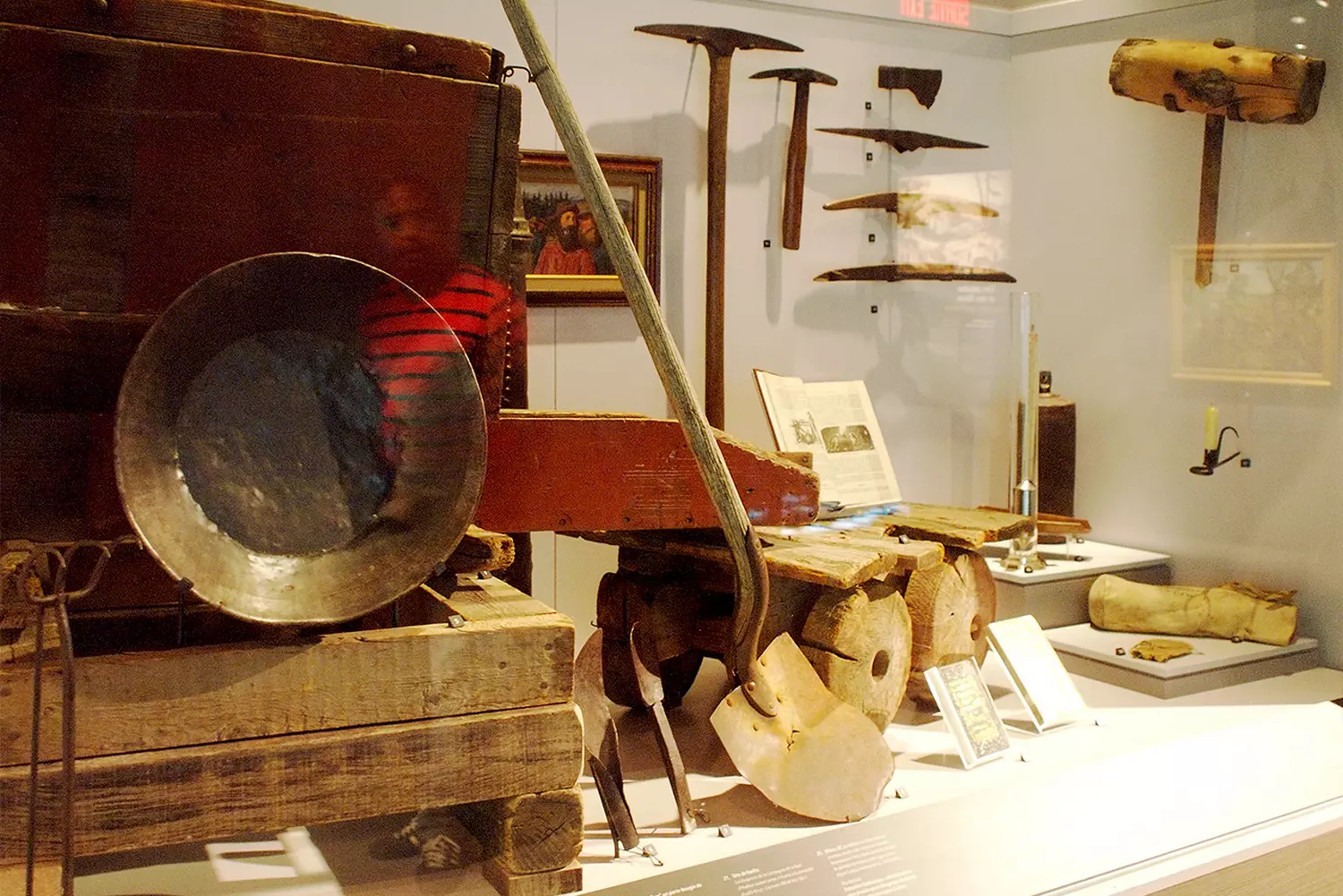
Who went searching for gold?
When news of gold on the shores of California spread around the world, it didn’t just ignite imaginations — it shattered social boundaries. It was a rare historical moment when the hope of wealth united paupers and merchants, escaped convicts and former generals, single mothers and members of noble families.
The Gold Rush recognized no class — only belief in a chance. And thousands of people, each with their own story, followed that chance.
- 01. Americans from the East Coast
The first to rush to California were residents of the East Coast — New York, Philadelphia, Boston. Amid mid-19th-century economic crises and job shortages, many Americans saw the “Golden West” as a last chance to get rich.
These were farmers who had lost their crops to drought. Young people tired of life in industrial zones. Veterans of the Mexican War. Many traveled on foot. Others made their way by ship around Cape Horn or through the jungles of Panama.
The hardships were unimaginable: people died from disease, exhaustion, attacks — and even cannibalism, as in the case of the Donner Party, which became a symbol of the tragic side of this great migration. - 02. Immigrants from Europe
In the 1840s–50s, old Europe was cracking at the seams: waves of revolution, the Irish famine, social inequality in Germany, poverty in Italy. During this period, the flow of migrants rushing to the New World surged dramatically. America seemed like a new Eden. And California — its heart. Among them were:
- Germans tired of fragmentation and economic stagnation.
- Irish escaping the potato famine.
- Scots leaving their harsh homeland in search of sunshine and freedom.
These people formed entire communities. They built churches, schools, and camps. Many remained in California, becoming founders of towns and neighborhoods that still exist today.
- 03. Chinese laborers: the dream of the Golden Mountain
By the mid-19th century, China was suffering a wave of disasters — wars, famine, opium addiction. People from Guangdong province sold everything to travel to a fabled land called “Golden Mountain” — Gam Saan.
The journey was terrifying: overcrowded ships, inhuman conditions, language barriers. But they went.
Their role in the Gold Rush was immense: the Chinese worked in mines, opened laundries, built railroads, and created the first fast-food system. Their contribution to California’s development is hard to overestimate — despite horrific discrimination, persecution, and restrictive laws. At the height of the Gold Rush, one in ten San Francisco residents was Chinese. By 1870, California was home to over 63,000 Chinese immigrants — a staggering number for the time. - 04. Freed slaves and African Americans
After the Emancipation was declared, many former slaves dreamed of a new life. Gold offered a chance to escape the old system and become free not only legally, but also financially.
Many African Americans traveled to California in caravans, sometimes forming cooperative mining teams to share the gold equally. Some opened shops, forges, and workshops. Among them were solo adventurers like Ezra Belden — a former slave who became the owner of a gold mining company.
These were the first steps toward Black entrepreneurship in America, and they began in mining camps. - 05. Women: heroines beyond boundaries
The story of the Gold Rush is usually full of images of bearded men in dusty shirts. But women were also part of this story — though often forgotten. They came as wives, sisters, daughters, but soon became independent figures in the new economy. They opened:
- Hotels and boarding houses for miners;
- Laundries — a vital business given the lack of amenities;
- Cafés and bakeries offering homemade food amid dust and chaos;
- Some even invested in mines, earning profits from them.
One of the most famous was Lola Montez — actress, dancer, and journalist who captivated men’s hearts and San Francisco’s political elite. Her figure symbolizes how women could influence society even in a world where gold was a “man’s business.”
- 06. Former soldiers, deserters, and... criminals
Mid-19th-century America was also an America without the internet, databases, or passport controls. So it’s no surprise that California attracted those who wanted to vanish:
- Former soldiers disillusioned after the Mexican War;
- Deserters and fugitives from justice;
- Gamblers, swindlers, adventurers of all stripes;
- And also — drifters, dreamers, utopians.
California at the time resembled a vast social laboratory where anyone could be anything. Today you’re a pauper from Georgia, and tomorrow — a mine owner. Today you’re a forgotten veteran, and next month — a millionaire. It was precisely this illusion of freedom and impunity that drew people westward.
The Gold Rush was more than just an episode — it was a direct manifestation of the American Dream. Everyone believed they would find a nugget the size of a fist and change their life forever. It was an era of social explosion, when the system hadn’t yet built filters, and opportunities seemed to outnumber the people.
And in this boiling cauldron intertwined:
- The energy of immigrants;
- The courage of African Americans;
- The labor of women;
- The risk of swindlers;
- And the romanticism of hundreds of thousands of dreamers who believed: gold lies beneath your feet — you just have to bend down and pick it up.
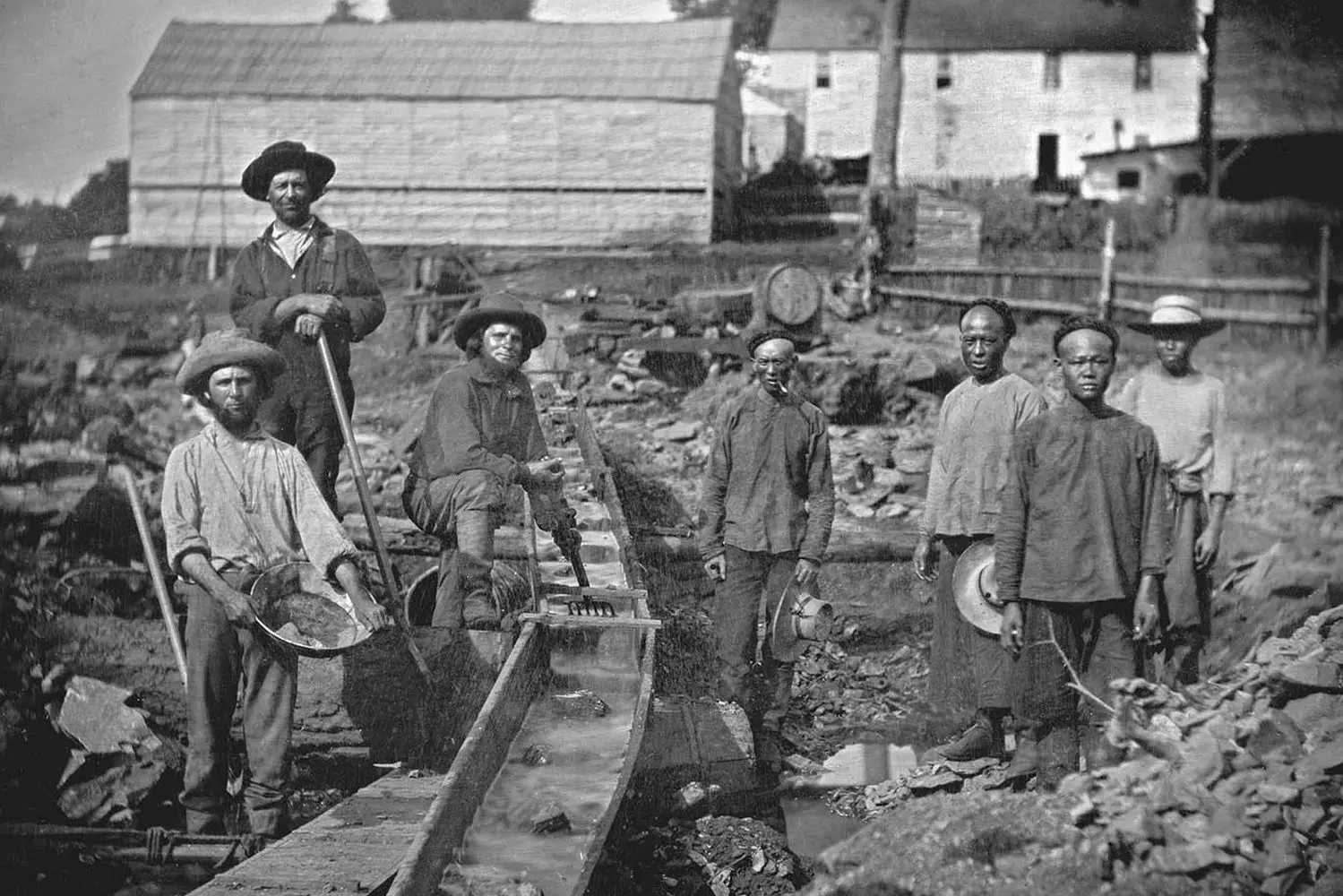
Geography of gold: where it was sought
Although California became the main stage of the 1849 Gold Rush, it was far from the only region affected by this mass frenzy. As soon as rumors of riches began to spread, it was as if America trembled—gold was sought everywhere. And each new discovery turned an ordinary valley or hill into an epicenter of hope and despair.
- 01. California: The Beginning of the Golden Era
This is where it all started — on the American River. The town of Sutter’s Mill became the first point on the map. Very soon, other mining locations appeared: Coloma, Sacramento, Mariposa, and later the famous Gold Country region covering the Sierra Nevada foothills. Where quiet roads and tourist trails now wind, once rang the sound of pickaxes, mountains crumbled, and entire wagon cities rose from the dust. - 02. Colorado: Pike’s Peak and Denver
In 1858, rumors of gold near present-day Denver triggered a migration wave known as the "Pike’s Peak Gold Rush." People traveled with the slogan “Pike’s Peak or Bust!” It was during this time that Denver began to take shape as a city. Regions along the South Platte River became mining centers. This period played a key role in Colorado becoming a full U.S. state in 1876. - 03. Nevada: Comstock’s Silver and Gold
Although the Comstock Lode in Nevada in 1859 was primarily famous for its silver, gold was actively mined as well. It was the first major deposit of precious metals in the West and became the foundation for the economic rise of the entire region. The town of Virginia City sprang up in mere months, and its saloons and mines became legendary. - 04. Alaska: Klondike and the Yukon
At the very end of the 19th century, in 1896, a new wave of gold fever began — the Klondike Gold Rush. It swept through both the U.S. and Canada. In the remote Yukon mountains and Klondike slopes, thousands risked their lives to reach the gold. Legends of Dawson City’s riches, the treacherous Chilkoot Pass, and the freezing winters still capture the imagination. At its peak, Dawson City was the fastest-growing city in North America. - 05. South Dakota: The Black Hills
In 1874, General George Custer led an expedition into the Black Hills, despite the land belonging to the Lakota. His report confirmed the presence of gold, triggering another rush. This sharply escalated conflict with the Native population, including the legendary chief Sitting Bull. Today, the towns of Deadwood and Lead remain symbols of that era. - 06. Oregon and Washington: Lesser Known but No Less Important
Though these states didn’t become the epicenter of the rush, their role in gold rush history shouldn’t be underestimated. In Oregon, gold was found in the Rogue and John Day river valleys. In Washington — in the Colville area and the Cascade Mountains. These deposits provided steady yields and attracted less desperate but equally determined prospectors.
"Each new deposit was a chance to start over — a chance that could only be bought later with sweat, dust, and blood." — from a prospector’s diary, 1852
Each gold spot on the map of the United States became a new "California." It was the Gold Rush, with all its passions, losses, and victories, that shaped the geographic and social face of the nation for decades to come.

Dust, sweat, and gold: how America went wild for gold
Life for a prospector in the 19th century was hard and unpredictable. But it was in these harsh conditions that character was forged and destinies were made.
Imagine a tent where the floor is muddy earth and the roof is thin fabric, offering little protection from rain or cold. This was the reality for thousands of people who gave up everything in the hope of finding their golden fortune.
- Work from dawn to dusk
A typical prospector’s day began at first light. People spent hours panning for gold or digging in mines, often 12–14 hours straight. Days off were rare, rest was brief, meals were rushed, and exhaustion was overwhelming. - Climate horrors
Winters in the mountains were brutally cold and deadly, while summer temperatures could reach 40°C (104°F). Mining camps were located in remote, inhospitable areas where even clean water was hard to find. - Hygiene? What hygiene?
Most gold mining settlements lacked even basic sanitation: toilets were primitive, washing water was a luxury, and garbage piled up underfoot. This led to outbreaks of disease — dysentery, typhoid, and tuberculosis were common in the camps. - Medicine at the level of prayer
Doctors, if they arrived at all, charged outrageous fees. Treatment mostly involved alcohol, bloodletting, and blind luck. Even a common cold could turn deadly.
The Economy of Hope: When an Egg Cost as Much as a Restaurant Meal
Prices in Gold Rush areas were outrageous:
- Egg — $1 (equivalent to about $30 today);
- Pants — up to $50 (around $1500 today);
- Coffee or tea — luxury items.
Why? Simple: everything had to be shipped in from afar, demand far outpaced supply, and merchants made a fortune from it. In fact, it was often store owners — not the prospectors — who became millionaires.
"The real gold in the Gold Rush was the business of selling to those looking for gold." — from a merchant’s letter in San Francisco, 1853
Dangers at Every Step
- Banditry
With little to no law enforcement, robbers operated freely in the camps. A successful prospector could be killed for a bag of nuggets. Night thefts were common and ruthless. - Conflicts with Native Peoples
Many gold-rich territories were sacred lands to Indigenous tribes. This led to violent clashes and bloodshed on both sides. Native communities suffered deeply — they were displaced, deceived, and often killed. - No guarantees
More than half of all prospectors found nothing. Some lost everything — including their health and lives. But hope proved stronger than fear.
Despite all the horrors, the Gold Rush was more than a hunt for metal. It was a quest for a chance. For hope. For a new life. Many believed: if not them, then who? If not now, then when?
"I have nothing. But somewhere out there in the mountains may be my chance. And I’ll find it — even if I die trying." — from a prospector’s diary, 1852
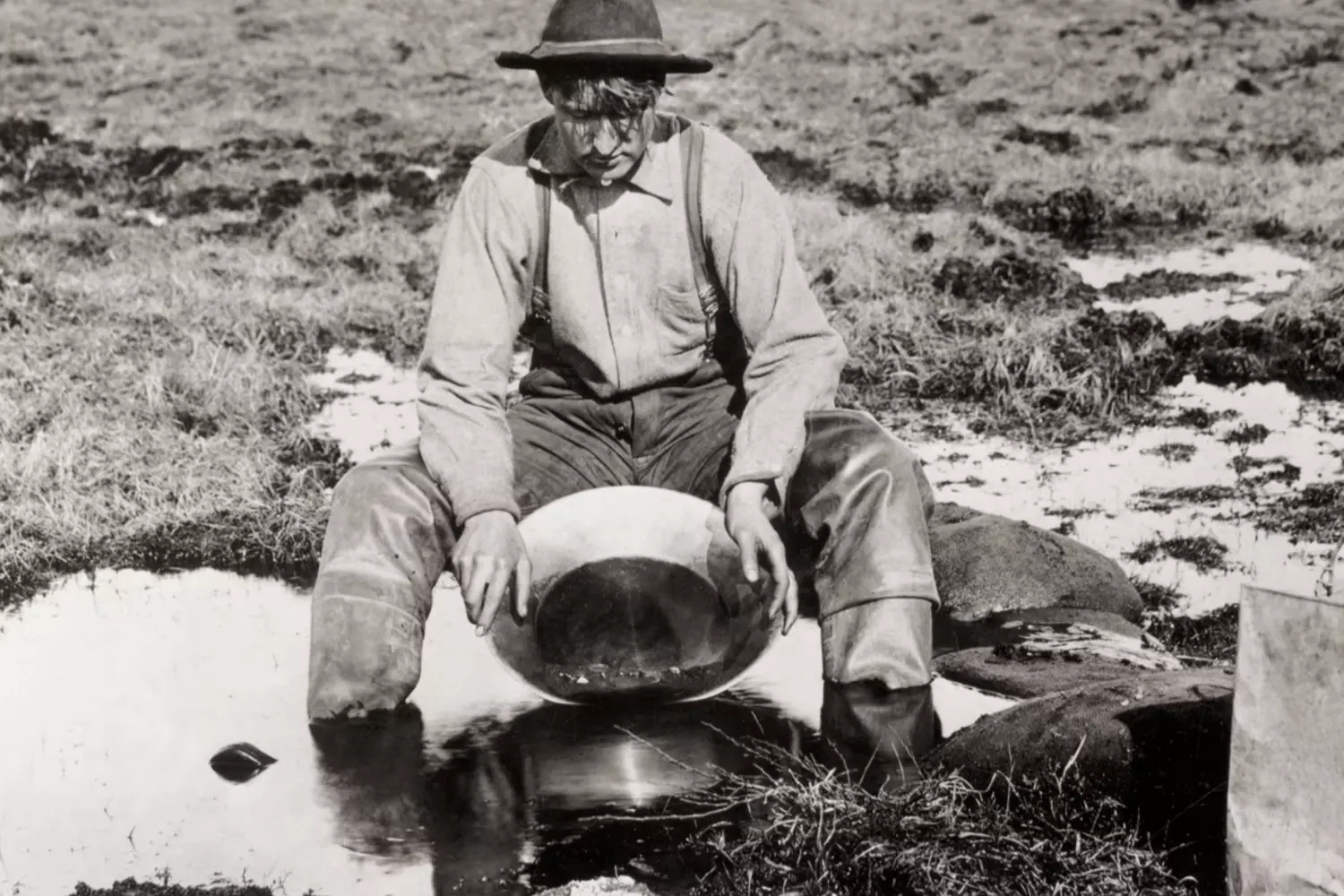
Technologies and methods of extraction
Prospectors started with the most accessible and intuitive method — gold panning in rivers. The panning technique involved scooping sediment from the riverbed into a round pan and gently swirling it in water so that the heavy gold particles would settle at the bottom. This was not only labor-intensive but also a very slow process, suitable only for individual miners.
As more people arrived and the thirst for wealth grew, methods began to evolve:
- Sluice boxes and rocker boxes
These were long wooden troughs with riffles, into which water and sediment were poured. The flow would wash away lighter materials, while gold was trapped in the grooves. - Primitive mines
Prospectors began digging vertical shafts and horizontal tunnels in search of gold veins in hard rock. These mines were often unstable and extremely dangerous.
When the Gold Rush entered its industrial phase, more radical methods came into play:
- Hydraulic mining
This involved using powerful jets of water to literally wash away entire hillsides and extract gold-bearing earth. It allowed large volumes of ground to be processed quickly but caused massive environmental damage. Rivers became clogged with silt, and valleys were flooded with mud. - Deep mining
These mines used hoists, pumps, and rail carts. This required engineering solutions and teamwork. Miners began to build elevators and ventilated tunnels underground. - Chemical extraction
Gold was extracted from ore using mercury and cyanide. The most dangerous was the amalgamation process: mercury bonded with gold but often leaked into water and soil, causing poisoning. Later, cyanide leaching was introduced — more efficient but equally toxic.
Thus, the journey from a pan in a river to explosive chemical labs took just a couple of decades. All in the name of the golden dream.
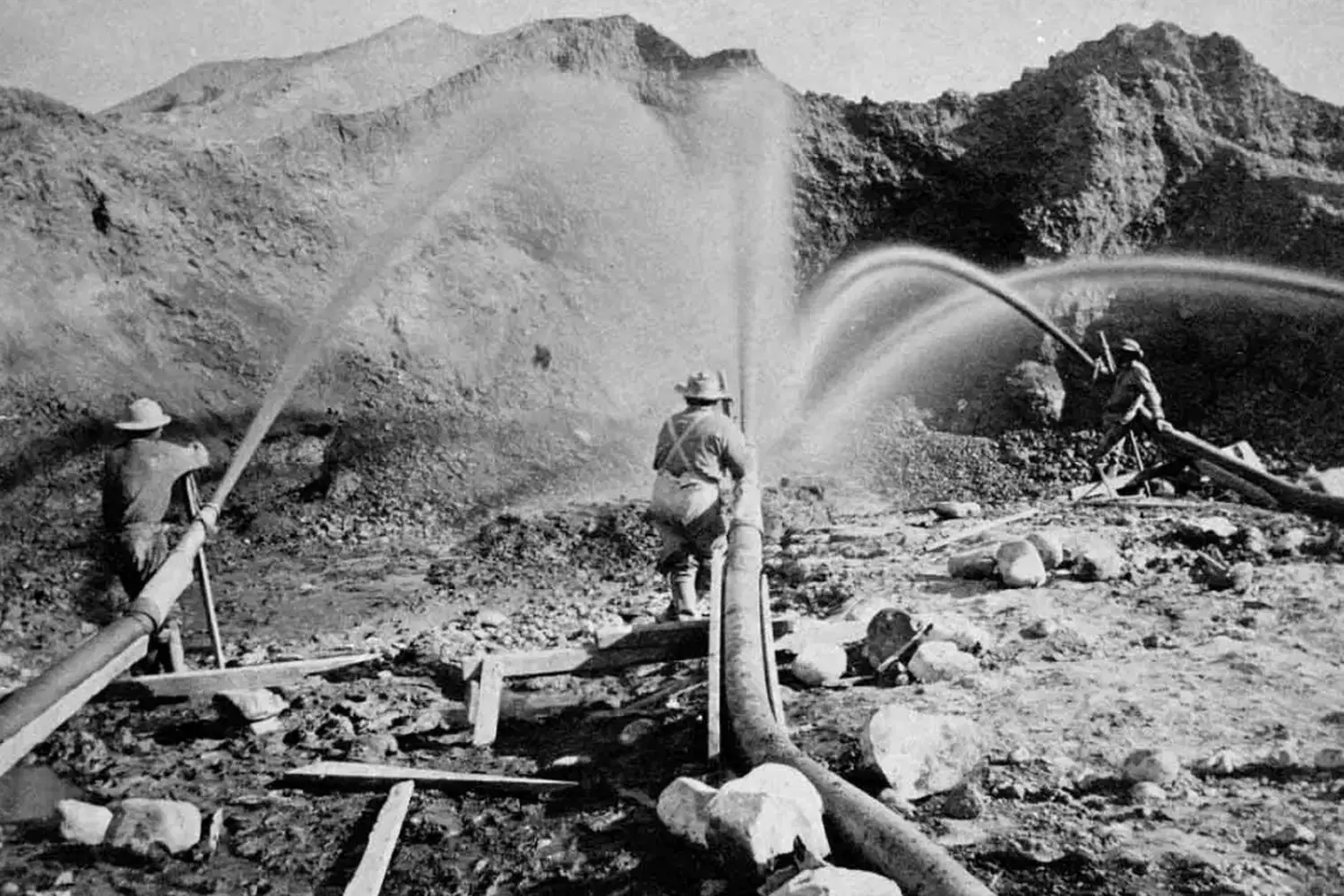
Boomtowns: How Settlements Grew and Died
The story of the Gold Rush is not just a chronicle of greed and adventure, but also an architectural ballad of ghost towns. Boomtowns were settlements that sprang up rapidly, grew like wildfire, and then vanished as if they had never existed. They were born of the promise of gold — and died from its absence.
- 01. San Francisco: from village to empire
When James Marshall discovered gold in January 1848 during the construction of a sawmill at Sutter’s Mill, the tiny coastal village of Yerba Buena had no idea it would become the gateway to a golden El Dorado.
Within six months, it had a new name — San Francisco — and by 1849, its population skyrocketed from 1,000 to over 25,000. Hotels, saloons, banks, and newspaper offices sprang up. The city became a hub of trade, traffic, crime, and opportunity. Construction happened before your eyes — from wood, canvas, and scrap metal.
But San Francisco was the exception. Most stories were tragicomic tales. - 02. Sudden Valley, Calico, and other forgotten towns
Sudden Valley — a mountain settlement in the Sierra — was named for the speed of its birth. In 1852, gold was found there, and within weeks the village grew to 6,000 residents. It had brothels, a theater, a bar, two churches, and two dozen shops. Three years later, the gold ran out, and the entire “civilization” collapsed like a soap bubble. Today, only rusty stoves and rocks remain. - 03. Calico
Calico, in California, first boomed during the silver rush of the 1880s, then switched to borax mining — and soon became deserted. It was later restored as a tourist attraction, but the ghostly spirit remains — the houses are empty, and the wind walks the streets. - 04. Bodie
Bodie is another example: in 1876 — a gold nugget; by 1879 — 10,000 residents. Newspapers wrote of "Bodie Blizzards" — storms of crime and drunkenness. Within five years — empty mines; within ten — abandoned homes.
"America lived through its own Middle Ages in the mines. It was a time of adventurers and anarchy." — Joan Drury, writer
Causes of Collapse: From Nature to Human Folly
- The gold ran out — and so did the people.
Everything depended on a single resource. Once the veins dried up, the exodus began. Businesses closed, homes were abandoned, and the settlement died. - Water shortages
In many places (especially the desert regions of Nevada and Arizona), gold was found — but not water. Without it, survival or washing ore was impossible. The town died before it was truly born. - Banditry and anarchy
Where there was no law, force ruled. Prospectors died in disputes over claims, women disappeared without a trace, and banks burned down — with their contents. Some towns simply scattered, unable to withstand the chaos. - Competition and migration
The discovery of new deposits elsewhere automatically triggered a population drain. A town that had been a magnet yesterday turned into a wasteland today.
Today, the United States is home to more than 3,800 officially registered ghost towns. They are not just empty — they are frozen moments of the American dream, open-air museums of shattered illusions.
The ruins of wooden bars, rusted wagons, nails in walls — all these are artifacts of humanity’s thirst for quick wealth. Some of these towns are now preserved by historians and volunteers — as part of the DNA of the American frontier.
The Gold Rush boomtowns became a metaphor for capitalist America itself. They were built on dreams and destroyed by disappointment. Each one was like a blank gunshot: loud, dusty, but ultimately fruitless. And yet, it was from these sparks that the modern Western economy was born.
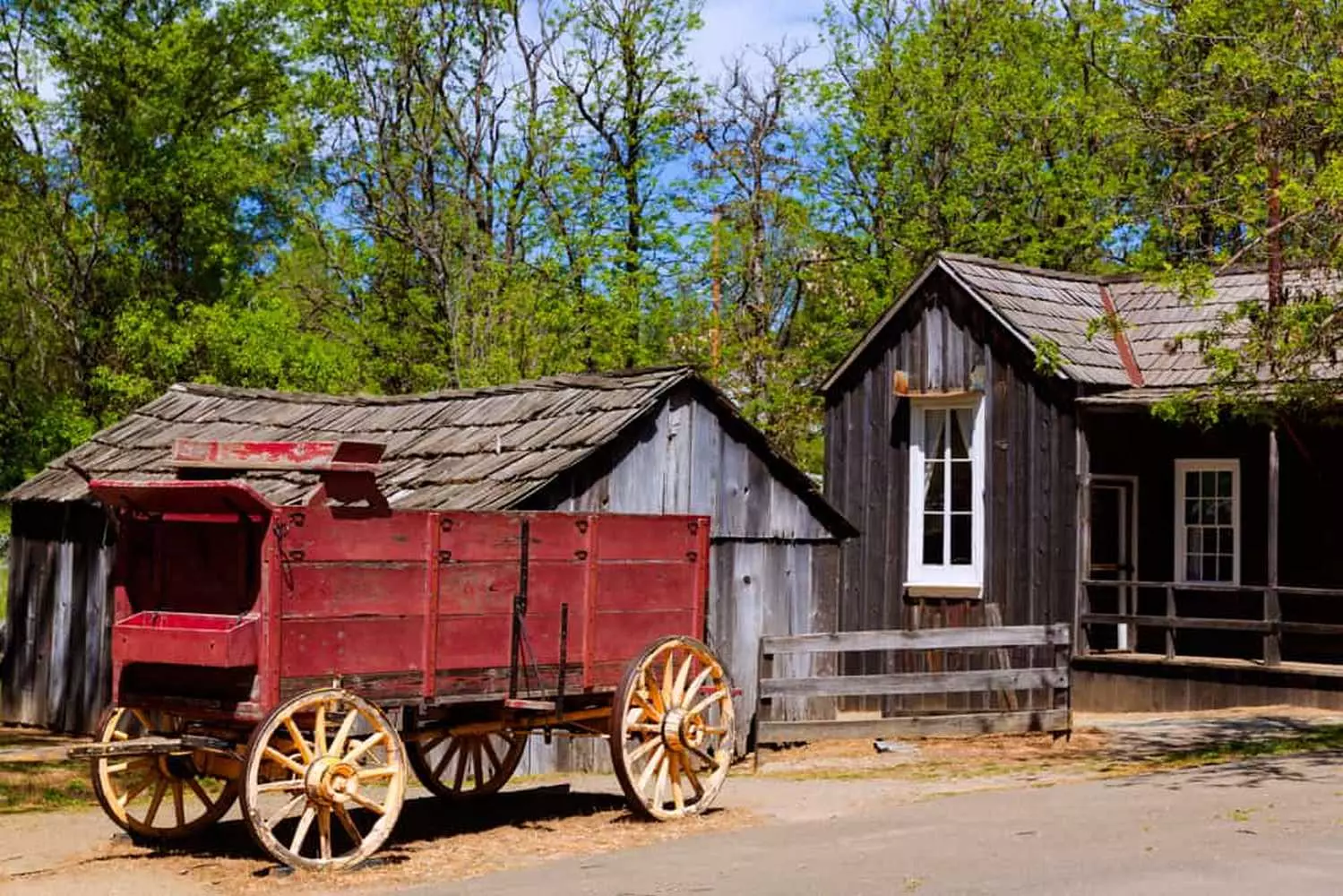
Who Really Got Rich: Gold as a Pretext, Not the Cause
The Gold Rush gave birth to the myth of a poor man becoming a millionaire with a single discovery. The reality was far more mundane: most prospectors returned home empty-handed — or didn’t return at all. Those who truly became wealthy were the ones who sold the dream, not those who chased it underground.
According to statistics, fewer than 5% of prospectors actually found enough gold to cover their equipment and living expenses. Only a handful became millionaires. But dozens of businessmen, merchants, and speculators made fortunes simply by being in the right place at the right time — with the right goods.
- 01. Sam Brannan — the man who sold the golden dream
Sam Brannan’s name went down in history as a symbol of ingenuity. He didn’t dig for gold. He bought up every pickaxe, shovel, and pan in the area — and then... spread the news about the gold discovery. The next day, he was selling shovels at ten times the purchase price.
"Brannan made his fortune from metal he never even touched." — from the San Francisco chronicles, 1851
Sam opened stores, invested in real estate, and became California’s first millionaire. His credo: sell tools to those who believe in gold. - 02. Levi Strauss — jeans instead of nuggets
Bavarian immigrant Levi Strauss arrived in San Francisco with fabric and clothing. He quickly realized that prospectors needed durable garments. Thus, the first jeans were born — made of canvas, and later denim, reinforced with copper rivets. They became iconic.
Strauss didn’t search for gold — he stitched clothes for it. And he became a globally recognized industrialist. - 03. Philip D. Armour — the meat king of the Gold Rush
The future meat industry magnate Philip Armour didn’t mine for gold — he fed those who did. His business supplying canned goods, salted meat, and rations brought in huge profits. Prospectors could live without gold, but not without food.
Armour later founded one of the largest meatpacking companies in the world.
While men were digging the earth, women were building businesses. Sarah Spencer ran a successful laundry service that made her more money than dozens of prospectors. Louise Klopp owned a chain of saloons, and Clara Brown — a freed slave — became a respected hotel owner and investor in Colorado.
Many women not only became wealthy, but also influential figures in their local communities.
Companies involved in logistics and finance also profited. Financiers from the East opened banks, insurance agencies, and investment firms. Railroad tycoons like Collis Huntington and Leland Stanford grew rich by transporting people, ore, and equipment.
Incidentally, Stanford later founded the famous Stanford University — with money from gold he never mined himself.
The true moral of the Gold Rush is that wealth came not to those who searched for gold, but to those who built the infrastructure around the dream. Those who understood the psychology of the crowd, who offered solutions, products, and services — they were the ones who built lasting fortunes.
This is how American capitalism in its purest form was born: gold was merely the catalyst, not the final goal. Intelligence, enterprise, and strategy proved far more valuable than nuggets.
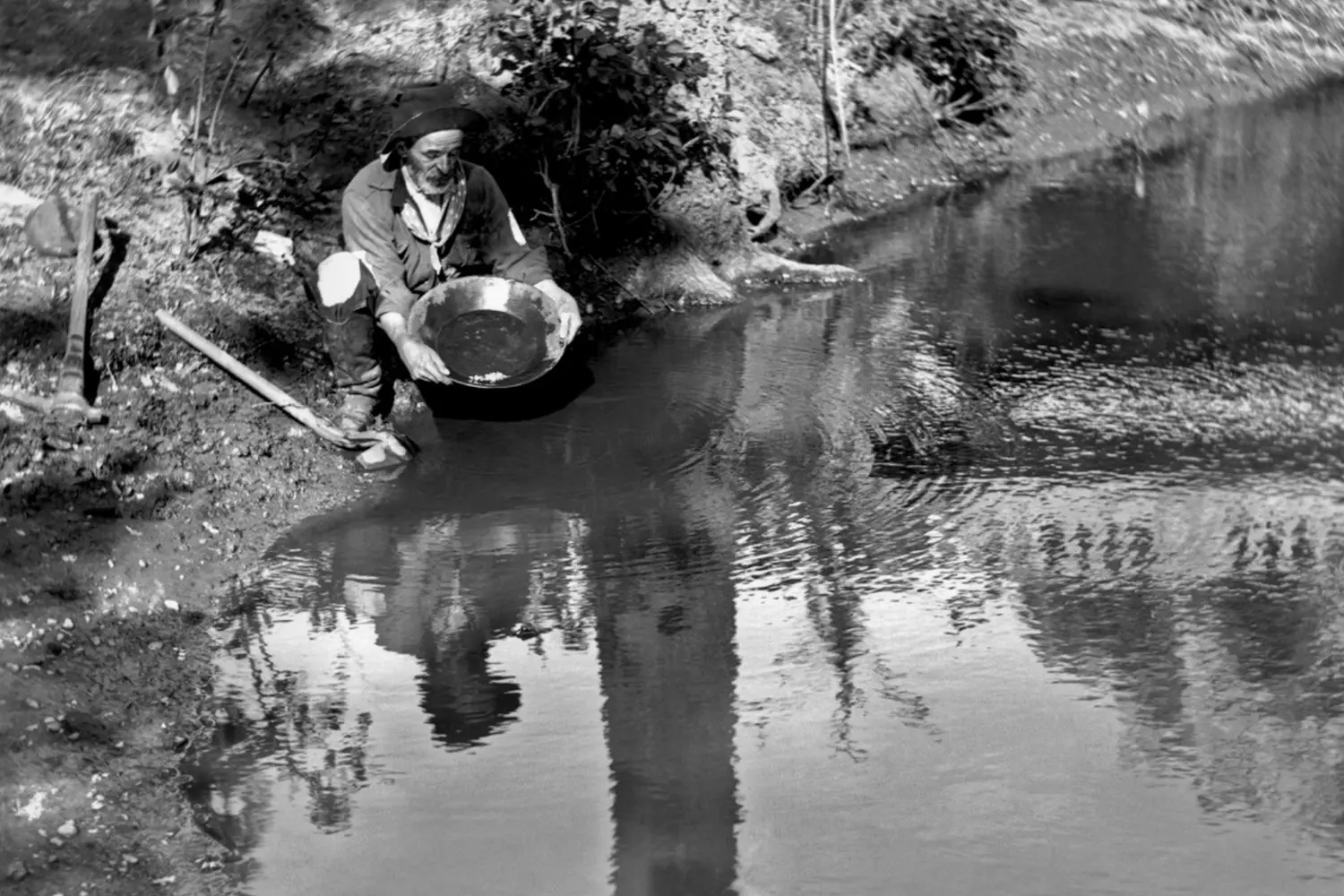
Impact on U.S. Culture and Economy: How Gold Transformed the Nation
The Gold Rush of 1848–1855 was not just a mass migration of adventurers to California. It was a melting pot of social metal that changed the face of America forever. And though there were few true billionaires among the prospectors, the whole country grew rich on the idea that anyone could get rich.
- 01. Economy: money began to grow
Before the rush, the American economy was agrarian and unstable. Gold changed everything:
- The first investment companies appeared
They bought rights to deposits, equipped expeditions, and sold shares. - Banking networks formed
In the West, these were "wild west banks," while eastern cities had stable institutions ready to lend against gold. - The market for goods and services developed
Vendors of tools, clothing, food, even entertainment profited as much as the miners themselves. The market became more dynamic and entrepreneurial. - California gold strengthened the dollar
Before that, the US faced a shortage of precious metals to back its currency. New gold inflows became the foundation of confidence in the dollar on international markets.
- 02. Transport: railroads for profit
Before the rush, getting to California took months, if not years. Some sailed around Cape Horn, others crossed America by wagon. It was inefficient and dangerous. The gold rush sparked active railroad construction:
- Routes were laid from eastern states to central California, especially Sacramento and the Sierra.
- The era of the Transcontinental Railroad began — a direct result of the rush traffic.
The railroad united the country — and became a symbol of the nation’s technological progress. America was put on rails — literally.
- 03. Culture: cowboy, freedom, and dusty roads
Before the rush, American cultural icons were dull: farmer, Puritan, soldier. Afterwards — the gold seeker appeared, dirty, sunburned, with a pickaxe on his shoulder and a dreamer’s gaze. He became an archetype:
- His descendants were cowboys, bounty hunters, loners of the West.
- The era of westerns began: songs, books, later — movies.
- The very idea of a hero fighting fate with bare hands but strong will — was born in the Sierra mines.
Lawless town, bar with a double-barrel shotgun, lone traveler against the setting sun — all echoes of times when gold was the only religion.
- 04. Politics: California joins the game
Before the rush, California was a territory without a clear future — disputed, wild, distant. But by 1850, the state’s population grew so rapidly that the federal government could no longer ignore its status.
- California became the 31st state of the USA in September 1850.
- This changed the political balance between North and South and accelerated events leading to the Civil War.
- Disputes arose over slavery in new states, infrastructure funding, and federalism overall.
What began as a search for gold became a question of national identity.
- 05. Society and labor: birth of the American Dream
Before the rush, success in the USA was associated with land or inheritance. Afterwards, a new myth took hold: "You can arrive poor and leave a millionaire. It all depends on luck and work."
This idea became the foundation of the “American Dream,” later embraced by immigrants, inventors, venture capitalists, and Silicon Valley entrepreneurs. The Gold Rush showed for the first time that status could be earned, not inherited.
Yes, for most it was a mirage. But the mirage drove history forward. - 06. Gold as philosophy
The Gold Rush didn’t just make America richer — it made it faster, more mobile, more ambitious. And although the metal itself has long lost its previous economic value, the golden idea remains: to take risks, act, seek, even if the road is dusty and luck weighs like a pud.
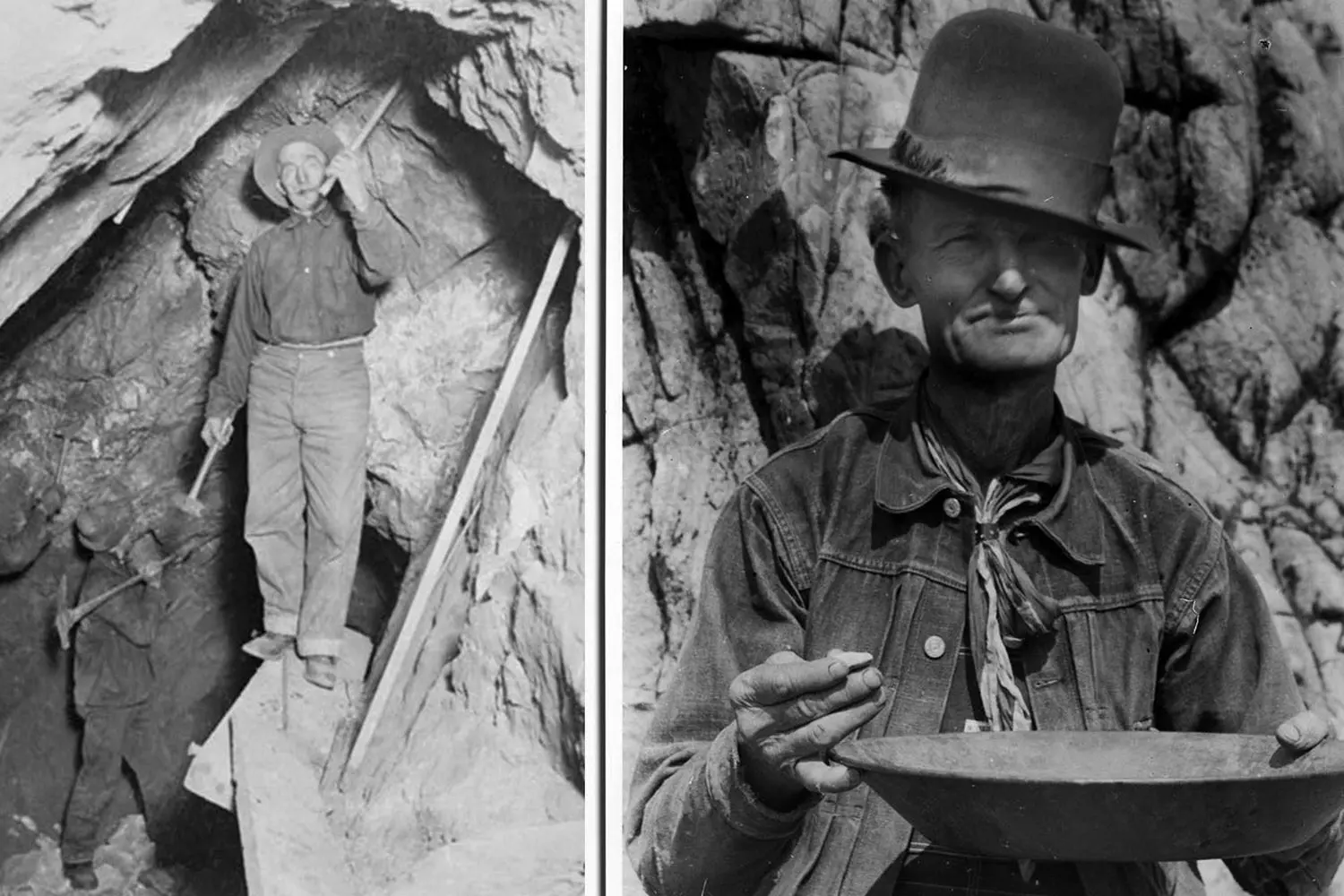
Hidden Secrets of the Gold Rush: What History Textbooks Don’t Reveal
The Gold Rush in the USA (1848–1855) is not just a story about thousands of people digging the ground in search of wealth. Behind the shine of gold lie incredible adventures, harsh laws of the Wild West, and amazing facts rarely talked about. Let’s uncover the most unexpected pages of this era!
- 01. Rivers still hold gold
It is estimated that 80% of California’s gold has never been found. Modern prospectors still wash river sand — sometimes striking nuggets! - 02. The Gold Rush killed Native Americans
The influx of gold seekers led to the mass extermination of Native peoples. Their numbers in California dropped from 150,000 to 30,000 in just 20 years. - 03. San Francisco burned to the ground twice — both times because of drunkenness
The city was hastily built from wood and tents. In 1850 and 1851, it completely burned down — and both fires started in saloons. Drunken gold seekers overturned lamps, and flames instantly destroyed hundreds of homes. After the second fire, citizens began building with bricks. - 04. The richest gold mine was found… thanks to a donkey
In 1859, in Nevada (then still part of California), a prospector’s donkey accidentally fell into a hole. While pulling the animal out, the owner noticed silver and gold in the soil. This led to the discovery of the "Comstock Lode" — one of the richest deposits in history. - 05. The world’s first fast food appeared thanks to the Gold Rush
Hungry prospectors didn’t want to waste time eating, so enterprising vendors invented the roast beef sandwich — a quick snack to eat on the go. And San Francisco saw the opening of the first Chinese restaurants in the USA — frequented by those tired of canned food. - 06. Some prospectors went broke… because of flies
Camps were full of insects, and flies often landed on food bowls. To keep them away, prospectors bought "fly-shield umbrellas" — tiny tents over plates. Traders charged up to $5 (about $150 today) for such luxury! - 07. The first "viral" advertisement was about gold
In 1849, East Coast newspapers printed fake letters from "lucky prospectors" who supposedly found whole mountains of gold. This was a marketing trick by shipping companies — selling expensive tickets to California. - 08. Gold was searched for even in… graves
When a cholera epidemic began in the 1850s, many buried the dead in expensive clothes and jewelry. Soon, "grave robbers" appeared — digging up fresh graves looking for gold teeth and rings. - 09. The Bitcoin of the 19th century: "Gold certificates"
Not everyone wanted to carry sacks of gold dust, so banks began issuing "gold certificates" — paper receipts exchangeable for gold. This became a prototype of the modern banking system. - 10. Cannibalism in snow traps
In winter of 1846-47, a group of prospectors (known as the "Donner Party") got trapped in the snowy Sierra Nevada mountains. Desperate, they began eating... each other. Only 48 of 87 survived, making this the darkest episode of the Gold Rush. - 11. "Gold" madhouses
Many who found large nuggets went mad from wealth. Special clinics opened in San Francisco for "golden maniacs" — patients unable to handle sudden riches and spending days counting imaginary gold. - 12. The first environmental disaster in the USA
Hydraulic gold mining washed entire mountains into rivers. In 1884, authorities banned this method, but by then 12,000 square miles of land were destroyed, and the Sacramento and San Joaquin rivers silted up by 60%. - 13. Birth of modern capitalism
In 1855, the bank "Adams & Co." collapsed, causing the first financial crisis in US history. This led to the creation of the Federal Reserve system and modern banking laws. - 14. Bloody statistics: every 12th person died
Out of 300,000 prospectors: one in five died from disease, one in ten was killed, one in twenty committed suicide. The odds of getting rich were 1 in 10,000. - 15. Secret Russian deal
In 1841, Russian colonists offered to sell California for $30,000 (about $1 million today). The USA refused, and seven years later gold was found there. This decision made America a world power.
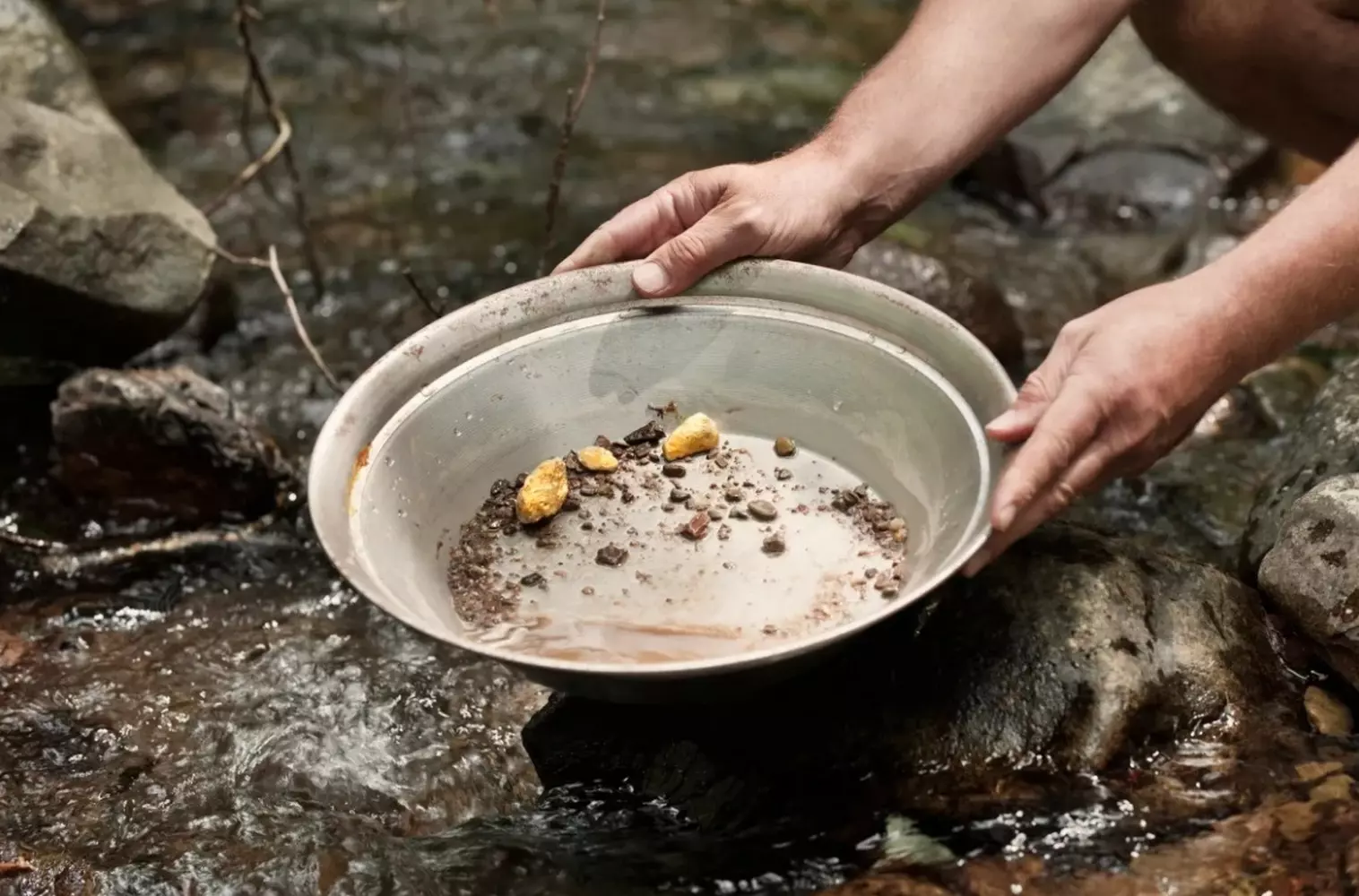
Discover the Legacy of the Gold Rush with American Butler
Today, where the mines once were, there are museums and tourist trails. In San Francisco, Sacramento, and Nevada, you can:
- Walk the routes once taken by prospectors;
- See preserved mining camps;
- Try panning for gold yourself.
Even Hollywood loves the Gold Rush theme: remember films like “McKenna’s Gold,” “The Old Man and the Gold,” “Klondike.”
The Gold Rush is not just a chapter in a history textbook. It’s a living reminder of passion, risk, and the pursuit of freedom and wealth. It shaped the American identity — a nation ready to risk everything for a dream.
If you want to follow in their footsteps, breathe the spirit of those times, and touch the legends of the miners — we invite you on a tour tracing the Gold Rush with American Butler. We’ll show you not just the gold-bearing lands, but the real America: with its history, drama, and inspiration.



























